Hidden Gems of Southern Italy: Indigenous Wines I Found at Radici del Sud
Check out some off-the-beaten-path wines that I tried for the first time while in Puglia!
Whether you’ve been following me for awhile or you’re new to Sip with Nik, you likely know that I have a passion for the lesser known varieties of the wine world. The indigenous grapes that are still flying under the radar on an international scale, but passionate producers are dedicated to keeping them alive and thriving in their respective regions. Back when my old wine blog, Palm & Vine, was still live, I had a regular weekly series highlighting a different rare variety from around the world. Now, you can find them in roundups in the Wine Discovery section of my Substack (Sardinia, Greece, Moldova & more).
My passion for these off-the-beaten-path wines started with my first trip to Sardinia when I encountered grapes I had never even heard of and was impressed by the quality. I also could never understand how some people only drink wines like Pinot Noir, Chardonnay, or Cabernet Sauvignon when there are literally thousands of diverse wines out there waiting to be discovered! This is the whole inspiration behind the wine club and wine imports company I’m working on starting (which I should have some updates to share soon).
But this newsletter is all about the “new-to-me” Southern Italian varieties I encountered while at Radici del Sud a few weeks back. Between Puglia, Calabria, Basilicata, and Campania, there were a lot to discover. So, here is a closer look at some of them. Let me know in the comments below if you’ve tried any of these varieties and if you have any favorite producers for these, drop the wineries in the comments so the whole crew can give them a go.
Susumaniello
Susumaniello was probably one of the new discoveries that I enjoyed the most. I had never heard of it before arriving in Puglia and of all these lesser known grapes, I found it to have the highest quality in the varied expressions I tasted. There were several different rosato wines made with this native grape and a beautiful low ABV red I was totally digging. More about those in the featured wines below.
Fun fact: the name for this variety is derived from the local dialect for donkey, somarello, because it’s a red variety known for high productivity and a tendency to load up on clusters. Similar to a donkey’s ability to carry heavy loads.
Region:
Susumaniello grows primarily in the Salice Salento of Puglia area with a select number of vineyards around Brindisi. Though you can certainly find it in other areas of Puglia.
In the Vineyard:
As previously mentioned, Susumaniello is a highly productive variety, which is why winemakers once driven by quantity abandoned it when yields began to slow. As one might imagine with such a high-yielding variety, Susumaniello requires careful attention in the vineyard with strategic pruning in the winter to direct the vines' energy towards growing quality fruit. It’s late ripening, quite drought resistant, and thrives in a hot, dry Mediterranean climate, as well as diverse soil types. So, it’s home sweet home in Puglia. Learn more about Susumaniello in the vineyard here.
Wine Style:
While it was once used mainly as a supporting grape in blends, Susumaniello is now shining in single varietal rosato and red wines thanks to advances in viticulture and the vinification techniques of winemakers supporting the renaissance of this rare variety.
Red wines made from Susumaniello typically have a deep ruby color with fruity aromas of red berries and juicy plums, plus notes of spice, pepper, or perhaps dark chocolate. They can be fresh and fruity, or well-structured and full-bodied, but usually with balanced acidity and tannins.
Featured Wines:
Vinicola Palamá Ninì Palamà Rosso: This was my favorite Susumaniello I tasted throughout the week at Radici del Sud. They also make a rosato under the same line, but it wasn’t available at the tasting. The grapes are destemmed, crushed, and undergo a cryo maceration for 12 hours. They bleed off some of the juice for rosé production, leading to a higher concentration of grape skins to juice. The result is a more concentrated Susumaniello red wine with a deep ruby red color. For me, this wine was clean, so well-balanced, and fresh with concentrated red flavors. At just 12.5% abv, it’d make a great wine for summer, too.
Tenuta Viglione Morso Rosa: This organic winery is stunning, but the production is massive. Normally, not my typical artisan winery BUT this Susumaniello rosato was quite good and quite popular amongst some of the European buyers on the trip. Beautiful, bright acidity with notes of wild berries and tart pomegranate.
Verdeca
I’d say Verdeca was my 2nd favorite lesser-known Southern Italian variety I tried at Radici del Sud. Although it can tend towards quite a neutral expression, so you can easily tell which bottles have a producer who is experienced with the variety behind them, one who takes attentive care from vineyard to bottle. Back in the day, Verdeca was used as a main variety for the production of vermouth, which declined to next to nothing in the 20th century. Today, you’ll find it starring in single-varietal wines or blended with other grapes, such as frequent native partner Bianco d’Alessano.
Region:
Verdeca is cultivated in various areas of Puglia including around Bari, Taranto, and the Valle d’Itria.
In the Vineyard:
Verdeca’s name comes from the characteristic green color of the grapes. It’s a variety that has medium vigor with medium sized conical or winged clusters. It has an average ripening time and prefers deeper soils, but is pretty adaptable to different soil types and climates. You can learn more about the ampelographic characteristics of Verdeca here.
Wine Style:
Verdeca wines are typically a straw yellow color with lime green reflections. Styles vary from quite neutral to a pleasantly fruity wine with flavors of pineapple, bergamot, and juicy citrus fruits. In either case, expect an explosive zinger of acidity, as Verdeca is super fresh.
Featured Wines:
Palamà Albarossa Bianca: I tasted a lot of Verdeca while at Radici del Sud and this one from Palamà was easily my favorite for its concentration and quality. Bursting with acidity, juicy flavors of lemon, grapefruit, orange zest, and orange blossom with savory notes of hay, Mediterranean macchia, minerality, and a fresh almond finish. Loved this one!
I Vini di Montemarcuccio Primi Filari Bianco Verdeca IGP Valle d'Itria 2024: Super clean, bright, and fruity with flavors of green apple, pear, and mouthwatering acidity. The 2024 vintage I tasted was more aromatic than their 2023, but both had a nice concentration and freshness.
Nero di Troia
For lovers of bolder red wines with some depth and spice, Nero di Troia just might be the native grape for you to try.
Region:
Nero di Troia, also known as Uva di Troia, hails from Puglia as well. It’s an ancient Apulian grape from its namesake town of Troia in the Foggia province. Like many obscure native Italian varieties, Nero di Troia has risen from obscurity to local stardom through the modern movement of rediscovering once neglected varieties. Actually, I was surprised by how many Nero di Troia wines there were at Radici del Sud, which must mean producers see a lot of potential in this variety.
In the Vineyard:
This variety is mainly grown in certain coastal areas of Puglia like Bari and Barletta, as well as other areas in northern Puglia. Traditionally, it was used only as a blending grape thanks to its deep color, fuller body, and alcohol content, but dedicated winemakers have revitalized quality to produce single varietal wines with great results. In the vineyard, Nero di Troia generally has large pyramid shaped clusters with medium compactness. There are two distinct biotypes of this variety, one with larger bunches and berries, the other with smaller bunches and berries known locally as Carmosina. Nero di Troia has moderate to low productivity in the vineyard, but is adaptable to soil types and different training systems.
Wine Style:
The top expressions of Nero di Troia are robust and complex with high tannins and medium to full body. Expect flavors of blackberry, blueberry, and licorice with notes of anise, pepper, or tobacco. The variety was awarded its own DOCG in 2011, the Castel del Monte Nero di Troia Riserva DOCG, which requires that the wine be made with a minimum of 90% Nero di Troia and must be aged for at least 2 years, including 1 year aged in barrel. These wines have a more powerful structure, tannins softened by barrique aging, and concentrated dark fruit and spice flavors.
Featured Wine:
Vignuolo Castel del Monte Nero di Troia DOC 2022: An intense ruby red color with garnet reflections with voluptuous flavors of red cherry, currant jam, almond, and black pepper with hints of chocolate. Good rounded tannins and a juicy freshness.
Gaglioppo
To be fair, I believe I only tried one expression of Gaglioppo while at Radici del Sud and it looks like it was also a blend with Greco Nero. That wine is listed below. It was certainly good quality, but I did feel the oak influence covered the varietal character. If you’ve tried a stand out Gaglioppo, let us know in the comments so we can track it down!
Region:
Gaglioppo is from Calabria and finds its top expressions amongst higher altitudes of the Cirò DOC.
In the Vineyard:
As a drought resistant variety, Gaglioppo vines are well-suited for the hot, dry climate of southern Italy. Soils in Calabria tend to be sandy with good drainage, which is ideal for the variety. This is a grape that’s highly susceptible to powdery and downy mildew, so pruning methods often focus on maintaining airflow to help lower disease risk. Yield management with green pruning is also essential as Gaglioppo can become diluted with higher yields.
Wine Style:
If you’re a fan of Sangiovese, then you might just love Gaglioppo because Sangiovese is one of its parent grapes. Plus, Sicily’s Nerello Mascalese is a sibling grape to Gaglioppo. These genetics should easily give you an idea of the wine’s style. Gaglioppo wines are usually bone dry with medium body, medium acidity, and medium to high tannins with moderate alcohol. Think aromas and flavors of crushed raspberries and red currants often accompanied by notes of licorice, balsamic, or herbaceousness.
Featured Wine:
Statti Batasarro Lemezia Riserva DOC: This wine was nicely balanced between fruit, alcohol, tannin, and acidity, but like I mentioned above, I felt the wood influence overpowered the variety. Though I believe this wine also includes Greco Nero as permitted in the Lemezia DOC.
Minutolo
Minutolo was a fun white wine discovery for me. I found both elevated, concentrated examples, as well as some that were less exciting. But that’s usually the case for every variety. The wine quality depends on site, vineyard management, and winemaking choices.
Region:
This white grape variety has grown since ancient times in the Valle d’Itria in Puglia between the provinces of Bari, Brindisi, and Taranto.
In the Vineyard:
Previously known as Fiano Minutolo, Fiano Pugliese, or Moscatellina due to its aromatic characteristics, it became known as Minutolo so as not to confuse the variety with the Fiano from Avellina in Campania. Thanks to its small, sparse clusters, Minutolo was on the verge of extinction in the 1970s as it was replaced with more productive varieties in DOC wines of Locorotondo and Martina Franca. A research study on indigenous Puglian varieties generated renewed interest in the grape and now producers are experimenting with it in blends and as single-varietal wines.
Minutolo clusters are medium-sized and cylindrical in shape, sometimes with multiple wings. It’s a variety with medium vigor that prefers clay-limestone soils and thrives as bush-trained vines (albarello) or on trellising.
Wine Style:
With reductive winemaking techniques, Minutolo can produce a concentrated and aromatic white wine. These wines tend towards lower alcohol at 11-12.5% abv, making Minutolo a great option for the warmer months. It’s a fresh and lively white wine with muscat-like aromas and a delicate floral framework.
Featured Wines:
Curtomartino Cretaceo: This Minutolo saw only stainless steel with frequent battonage over 4 months in tank, resulting in a lovely texture to complement its bright acidity and intricate aromas of musk and florals. Really pretty.
Pietraventosa Apriti Cielo!: A blend of Malvasia and Minutolo that’s a surprisingly savory white wine with elegant yet linear acidity that gets right to the point. My tasting notes included “really happy with this one” so you know it was thoroughly enjoyed. ;)
Magliocco
Region:
Magliocco is grown in Calabria. It looks like there are two types: Magliocco Dolce and Magliocco Canino. I tasted the latter one, so that’s what we’ll focus on here. It’s thought to have Greek origins and arrived by way of the Greek settlers who called the land Enotria.
In the Vineyard:
Apparently, Magliocco has a lot in common with Gaglioppo in the vineyard in terms of appearance, as one is frequently mistaken for the other. It’s a relatively disease resistant variety, but will feel the effects of extended periods of drought. Magliocco has medium-sized elliptical shaped berries with medium-sized, conical clusters. It’s a late ripening variety that often needs more time on the vine to fully mature. It seems that this variety is grown all over Calabria and is quite prominent. I’m surprised I’ve never had it before now.
Wine Style:
Magliocco is frequently used in blends for various DOC wines like the Terre di Cosenza DOC and its subzones, Esaro and Donnici. Wines made with this variety typically have a concentrated color and aromas of dried red fruits, black cherry, plum, and sometimes herbal notes. They can be tannic with moderate acidity and alcohol.
Featured Wine:
Casa Comerci Libìci: This was a refreshing, juicy red wine with medium acidity and medium body, plus flavors of black cherry and raspberry. It’d be great as a chilled summer red, too.
Cheers to Wine Discovery!
These native Southern Italian varieties each have their own distinct character, history, and expression, offering a glimpse into the incredible diversity and cultural richness of the region’s wine identity. From the bold depth of Nero di Troia to the aromatic charm of Minutolo and the zesty freshness of Verdeca, these grapes are living proof that Italy’s vinous soul stretches far beyond the familiar. I’m hoping to eventually bring a couple of these wines to the wine club I’m working on launching.
So, make sure you're subscribed and consider upgrading to paid to receive early access and a founding member discount on wines when we launch!
A few others I enjoyed:
Asprinio: an ultra-rare grape variety in Campania that Barbato is making into seriously good, complex, crisp traditional method sparkling wines.
Bombino Nero: another red variety from Puglia that I enjoyed in a bright, fruity rosato by Vignuolo.
Ottavianello: supposedly the same variety as Cinsault that makes lighter bodied aromatic reds with red fruits, florals, and spice in the Salento area of Puglia.
I hope this roundup inspires you to seek out these lesser-known wines, support the producers keeping their stories alive, and expand your palate beyond the usual suspects.
If you’re curious to dive deeper into the wines of Southern Italy, check out these Sip with Nik articles:
Radici del Sud Highlights & Insights into Southern Italy’s Wine Scene
Primitivo Reimagined: Uncovering the Distinct Styles of Gioia del Colle and Manduria
8 Sardinian Wines Worth Discovering Other than Cannonau & Vermentino
Let’s keep discovering together—one grape at a time.






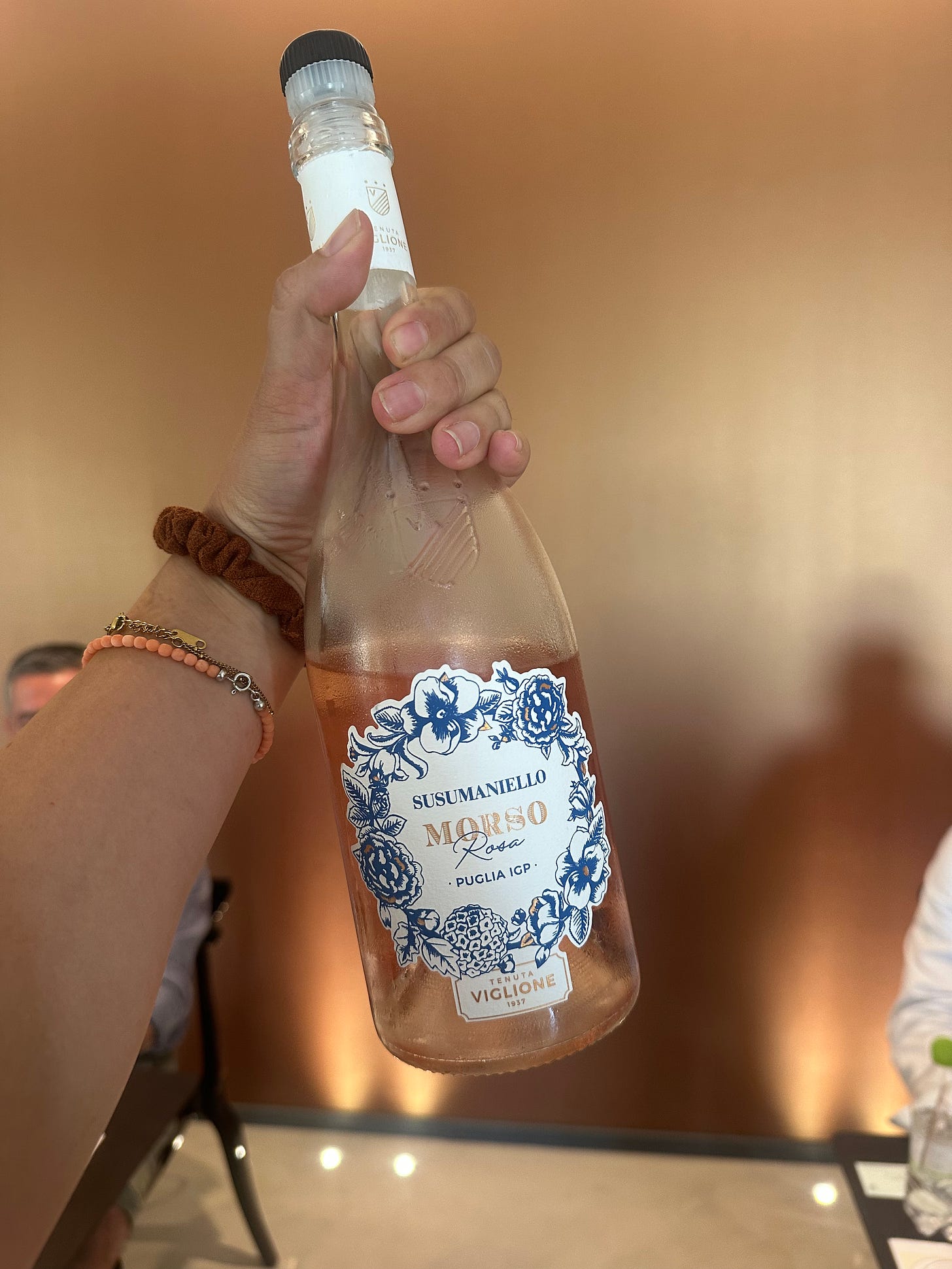
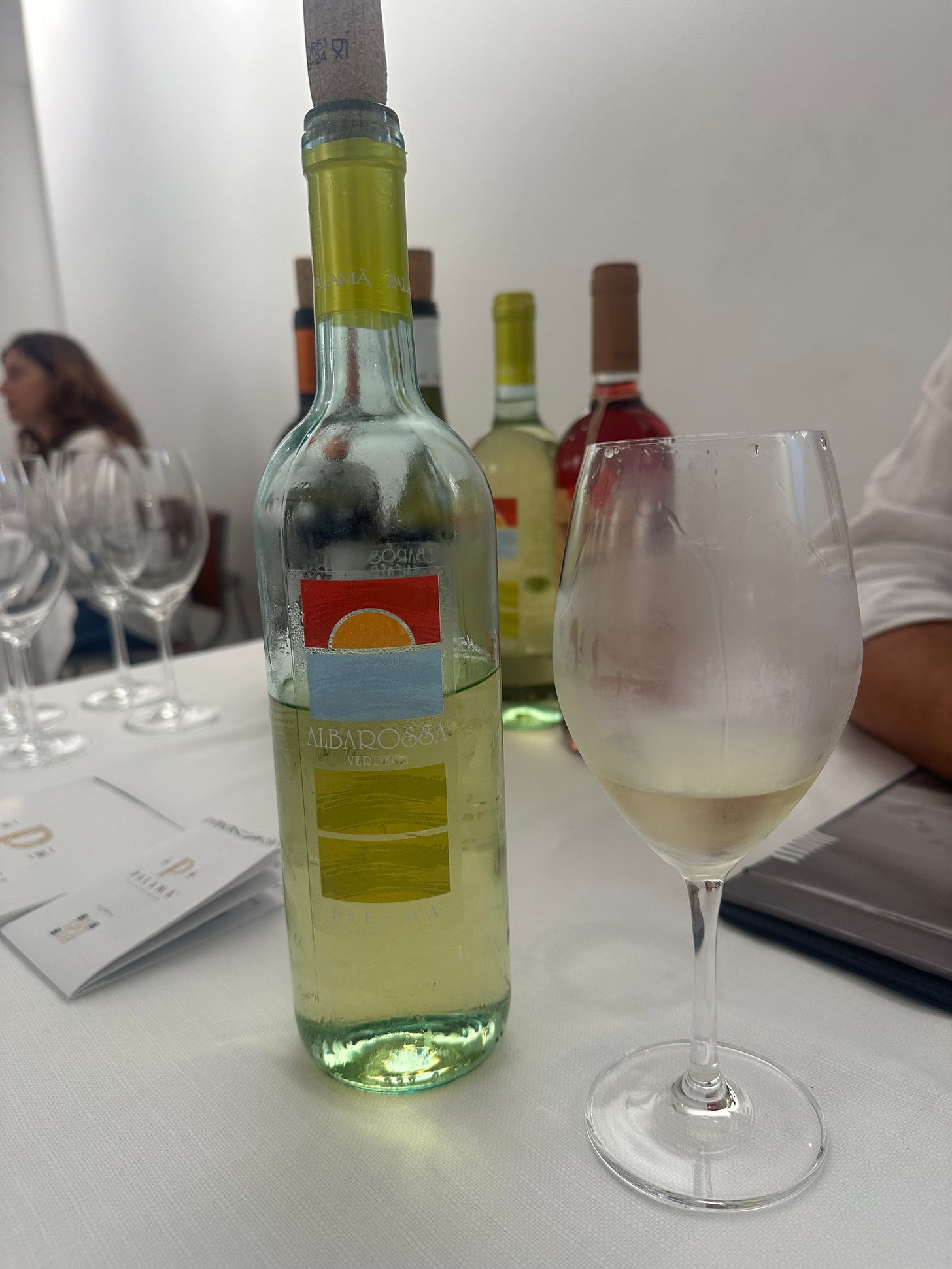
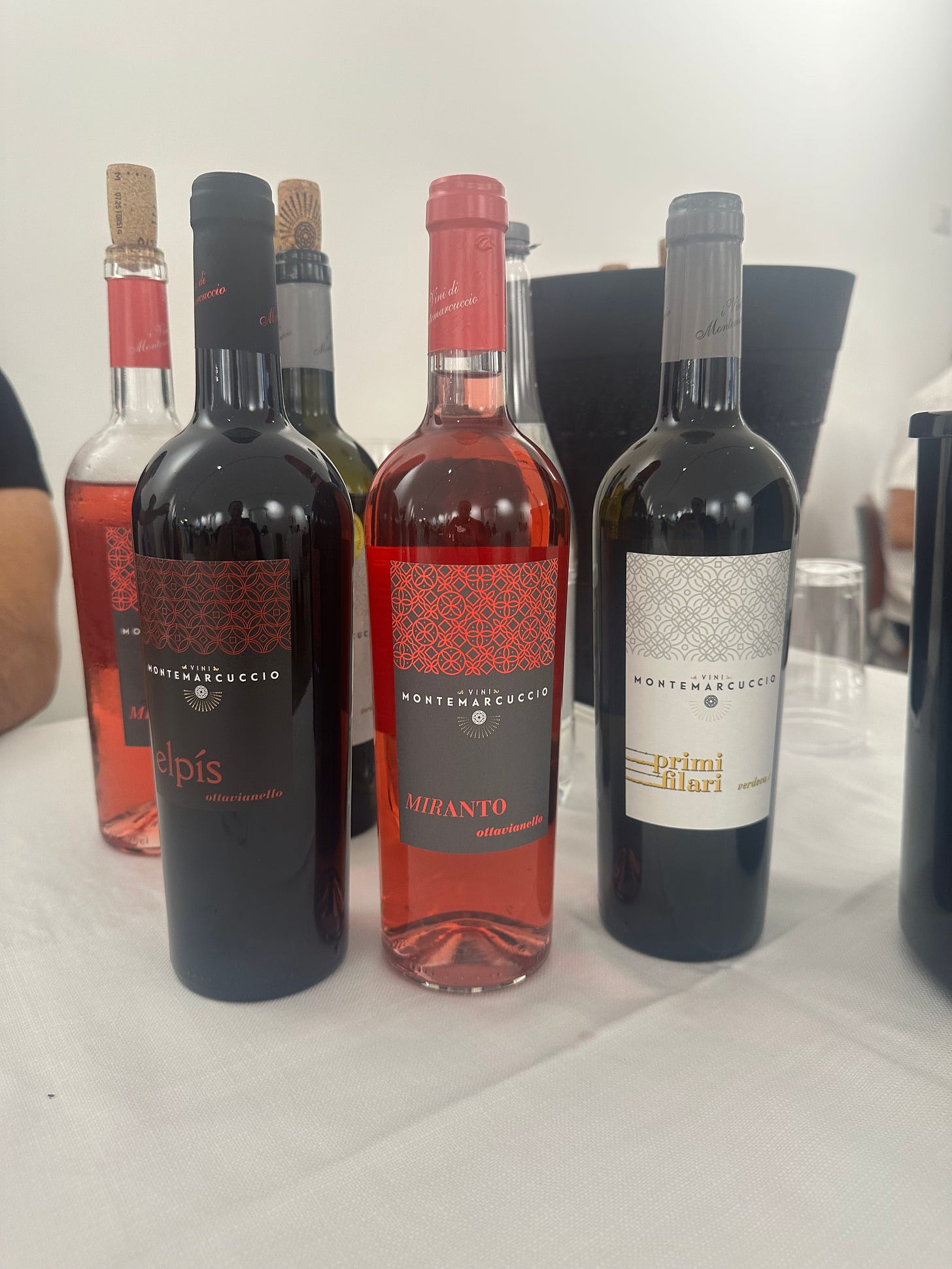
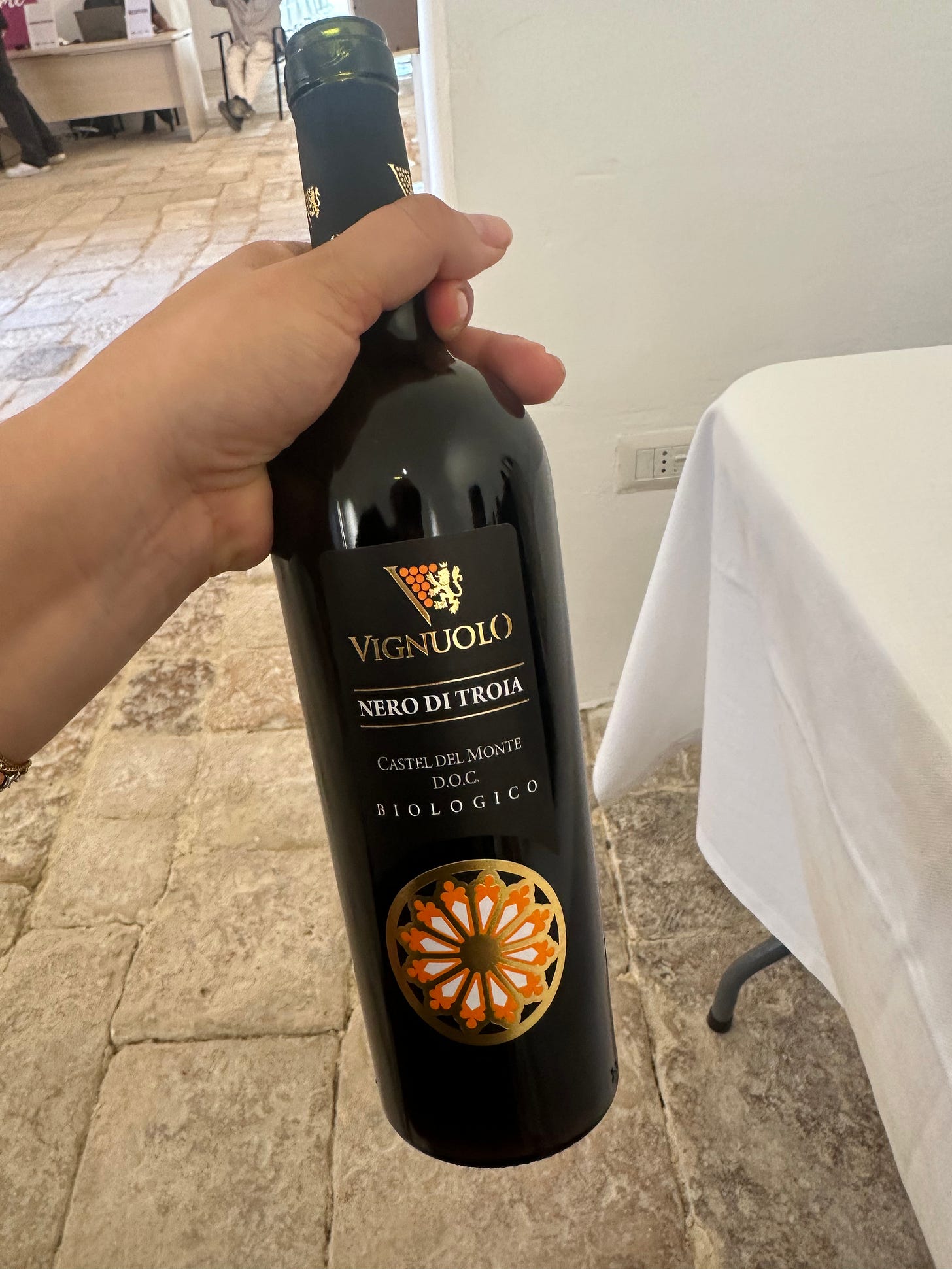
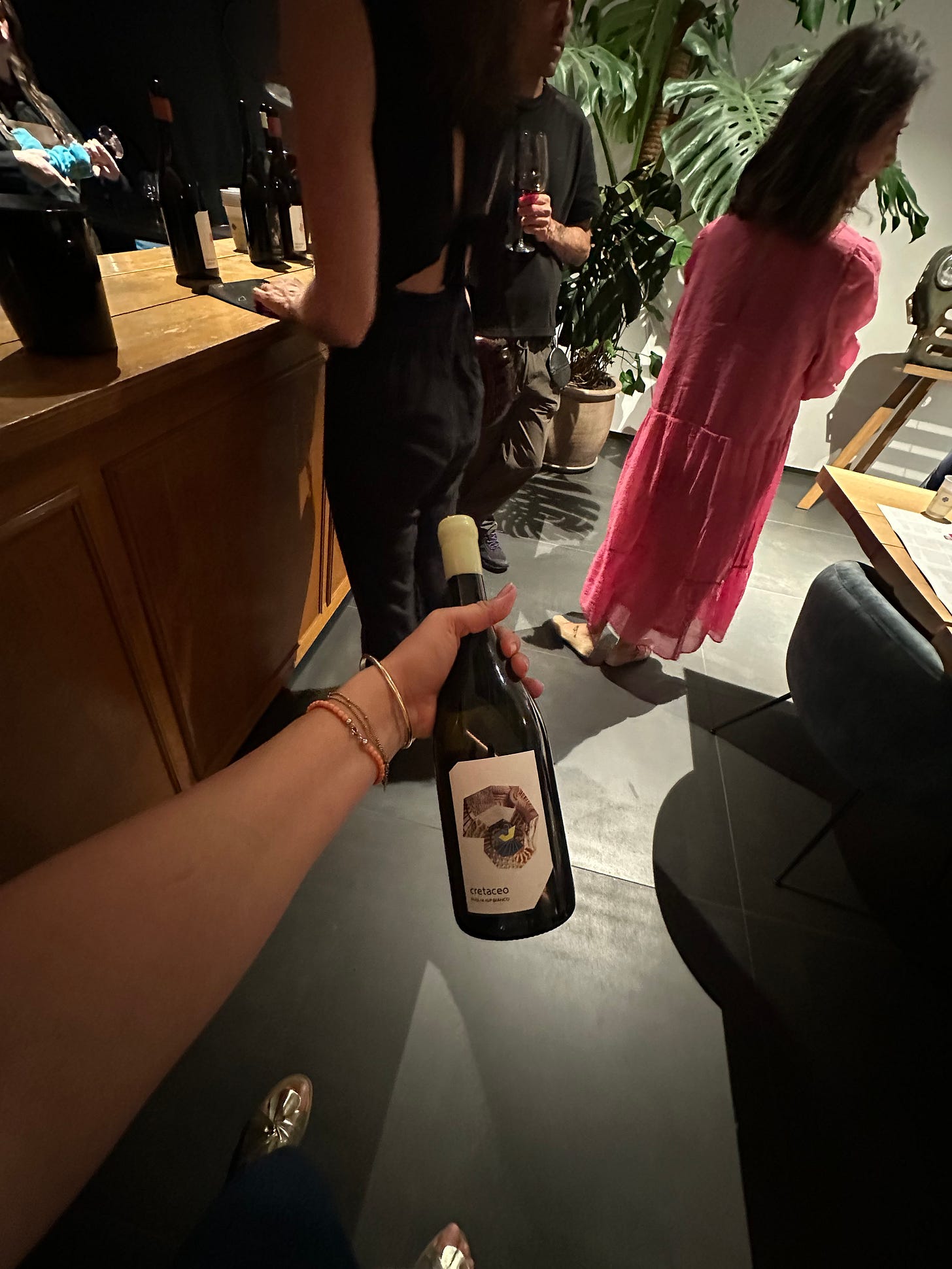
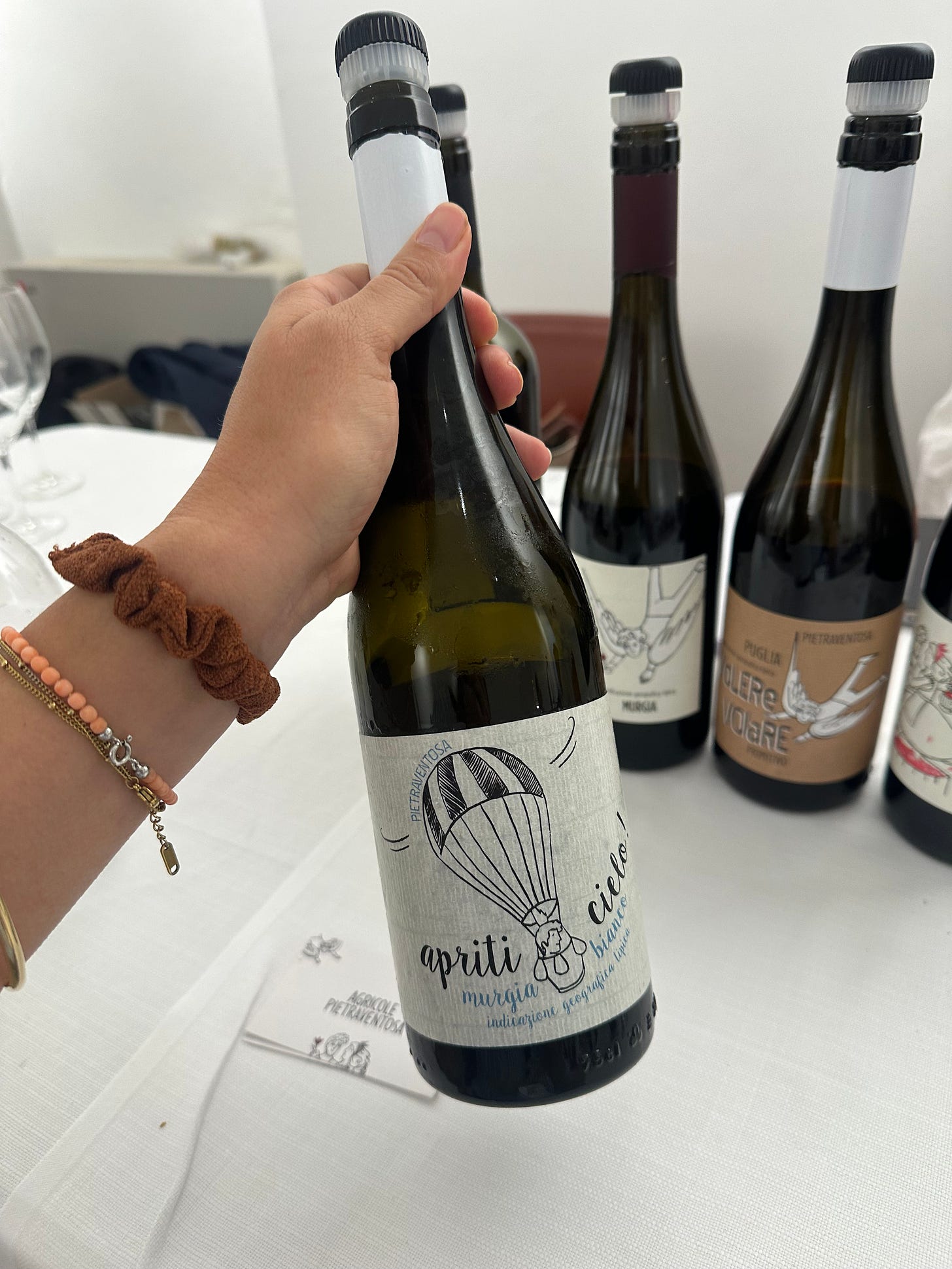
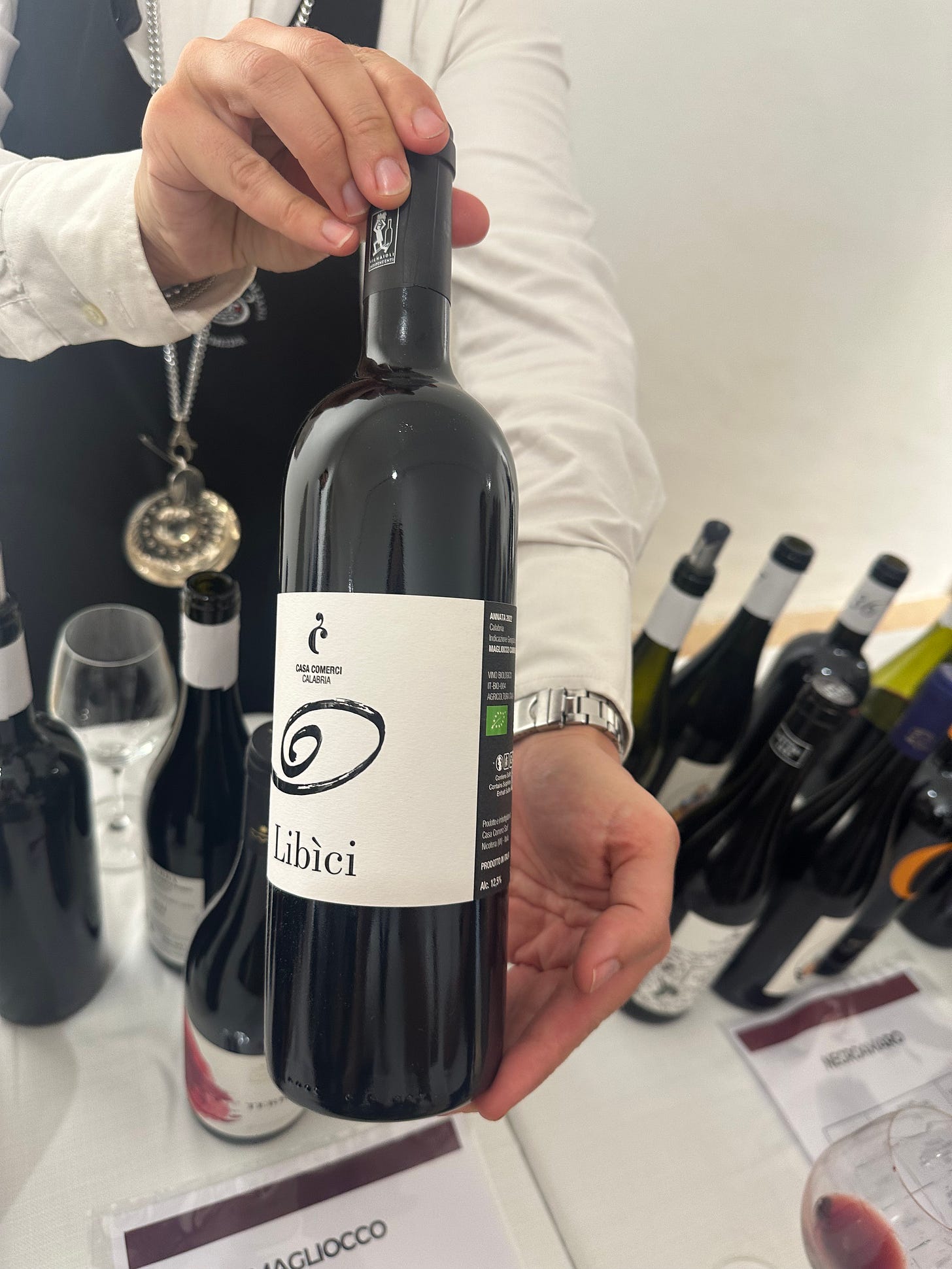
Minutolo sounds like a great summer wine in Puglia. I do keep notes on a lot of what I drink when I’m down there, but when I did an internal search of my docs, I couldn’t find a reference, which bums me out, because that’s a cool find. I don’t always snap a pic when I’m in a wine bar, I just forget.
Ottavianello is another one that I’ll have to seek out next time. But like so many things in Puglia, you’ve gotta be in the right town to find that one grape, that one wine. Move too far in any direction, you’ll see a different set of wines.
Tenuta Viglioni, had a few of their wines, the Marpione Primitivo Riserva was one that stuck out for its character. The whites and rose were all clean, well made and approachable. They seem to have a solid presence of distribution in Puglia.
I’ve had a few Susumaniello but never outside of Puglia. Hard to get in the States. Masca del Tacco in Erchie made a Susumaniello and the Primitivos I’ve had from them were bold expressions of the grape.
Really like seeing all the different stuff you’re drinking.
https://southernitalywine.com/ciro-revolution-return-to-natural-winemaking/
Hi Nikki - Above is a link to a 6 year old post of mine on Ciro` Marina wines. As you will note, I focus on the artisanal wineries. I enjoy wines from this area. Currently, I have Arcuri, Calabretta, Du Cropio and Ceruado wines in my cellar. If the post does not appear, I can send by separate email.